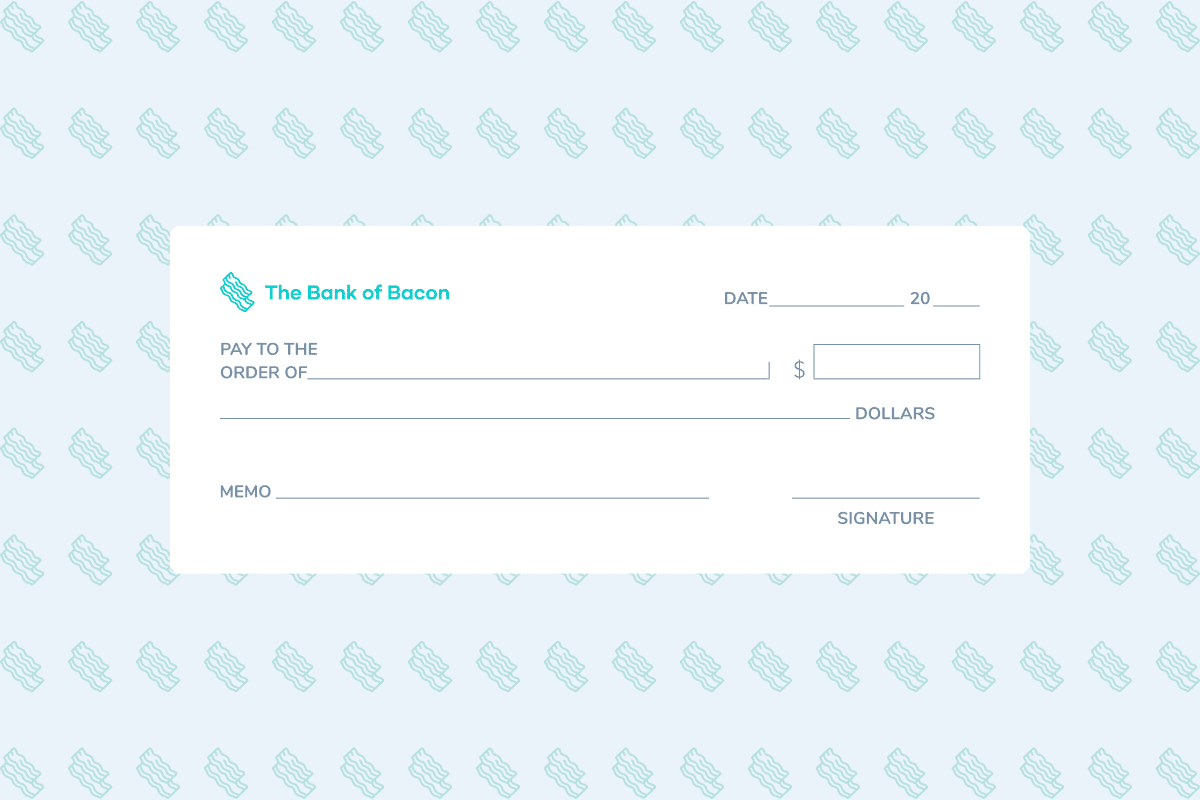Certified cheques in Canada: How Do They Work and How to Make One?
By Arthur Dubois | Published on 03 Aug 2023

While most Canadians do their banking online and pay for things with a credit card, for some items you may need a certified cheque. If you’re looking to buy something like a car or home, sellers may require this type of cheque. You might be wondering why a piece of paper is so important to make a large purchase and how it differs from a personal cheque. Below, we explain the reasons why a certified cheque is a means of doing a safe transaction and much more.
What is a certified cheque?
A certified cheque is also called a bank certified cheque. It’s much like a personal cheque with an added feature for security. The bank will have literally put a stamp of approval on it. Your bank is certifying that the amount of money the cheque is made out for can be covered by the funds in your account.
The bank will check to see how much money you have available. If you have enough to cover the cheque, they’ll certify it with a stamp. When the cheque is issued, those funds are frozen in the sense that you can’t use them for anything else.
The recipient that is receiving your certified cheque will know that the funds are there and you’ll take over ownership of whatever it is you’re buying. They know that there won’t be any issues when they go to deposit the cheque. That is the appeal of a bank certified cheque.
How can I get a certified cheque?
You’ll go to your main bank branch and request it from any bank teller. They’ll take a look into your account to see that you have the funds to cover the cheque. The teller will also ask for your identification and signature.
The teller may also add special conditions on the cheque. An example of this is stipulating how long the cheque is valid for and how quickly the funds are available for the recipient once deposited. You’ll fill the cheque in just like you’d do if you were writing a personal cheque. The bank then stamps the cheque and adds their signature or mark for full certification.
How long does it take for funds to be made available?
It usually takes a few days for money to arrive in the recipient’s account once deposited. Banks know that the amount of money on the cheque is available so most recipients will see the money in their accounts within one business day. The best way to get the money quickly for the recipient is to deposit the cheque in person at the bank.
Most banks will give recipients access to $5,000 or less right away. However, they may put holds on more than that. That protects the bank.
The difference between certified cheques and cashier’s cheques
They are similar in many ways. Cashier’s cheques are drawn from the bank’s account while certified cheques are drawn from the payer’s account. They both have inexpensive fees, offer high security, and reduce fraud.
Certified cheques and bank drafts
Some banks don’t offer certified cheques any longer but they do offer bank drafts. With a bank draft, the payer’s financial institution issues the draft to the recipient at the payer’s request. When the order is sent, the bank retrieves the amount from the bank account of the payer. This allows financial institutions to directly transfer it to the recipient’s bank account. It does not require a signature of the recipient.
That’s one of the big differences between certified cheques and a bank draft: a signature is required for the certified cheque. Also, with a certified cheque, funds aren’t drawn from your account; they are only reserved to carry out the transaction. When a payer uses a certified cheque, it is written by the payer and verified by the bank. With a bank draft, the bank will process everything on behalf of the payer.
How much does issuing a certified cheque cost in Canada?
Issuing a certified cheque has a fee in Canada. Most banks are quite similar in their costs. The best case scenario is if both the recipient and the person writing the cheque bank at the same place. Some of the Canadian banks have stopped issuing certified cheques in lieu of more modern tools like bank drafts.
Bank of Montreal (BMO)
The Bank of Montreal offers certified cheques for $20. However, if you become a client with a Premium chequing account and enter the Premium program, you’ll get certified cheques for free.
Bank of Nova Scotia (Scotiabank)
The cost is $15 when the cheque is made at the payer’s request. If requested by the recipient, the cost is $15 if they have a Scotiabank account and $25 if they do not. If paid in cash or by cheque that’s been drawn from another financial institution, there’s an additional $3.00 charge. Whether you have a Scotia Basic Bank Account or the Ultimate Package, prices stay the same.
Canadian Imperial Bank of Commerce (CIBC)
As of September 1, 2017, CIBC doesn’t issue certified cheques for cheques drawn on personal accounts. They have other payment solutions that are geared towards electronic transfers like bank drafts. When CIBC did offer certified cheques, they charged $15 for the recipient requesting.
Royal Bank of Canada (RBC)
RBC also stopped issuing certified cheques November 1, 2018 on personal accounts. They offer other alternatives and on their site they recommend Interac transfers. However, a bank draft would be more secure when transferring large amounts of money.
Toronto-Dominion Bank (TD)
TD Bank charges the holder of the account where funds will be withdrawn $10. If the request for a certified cheque comes from a person other than the holder of the account, the fee is $15.
National Bank of Canada (NBC)
The National Bank of Canada also stopped issuing certified cheques. The bank is promoting bank drafts at the cost of $9 as opposed to certified cheques. You can get a National Bank bank draft if you have a chequing account such as The Minimalist.
Desjardins
Desjardins still offers the service of issuing certified cheques. If it’s made at the payer’s request, the fee is $15. If it’s at the request of the recipient, it’s $20.
Alternatives to certified cheques
Just like bank drafts and money orders, the certified cheque is not as popular as it once was to send money abroad. Since online banking and electronic paying has become more secure, there are neobanks and new tools to move large sums of money such as Wise and Interac. Their transfer rates are often more interesting than those of big banks.
Wise
Wise is dedicated to international money transfers. You have access to over 40 currencies to send money in over 160 countries. You cannot send money between two canadian accounts. Wise charges a direct debit fee plus its own fee. For example, to send $1,000 CAD to a US account, you would pay $9.04 in fees with direct debit. You can pay by direct debit, debit card, credit card or a bank transfer. You can also pay bills. You’ll always see the total cost upfront.
For security purposes, Wise asks for a photo of your ID for some currencies and large transfers. Wise holds your money with established financial institutions, separately from their own accounts, and also has a dedicated anti-fraud team.
EQ Bank International Money Transfer
EQ Bank offers different types of accounts and a bank card. But this neobank also helps you send money abroad. Their service is powered by Wise. Your money will get to the recipient’s account within 3 business days (or less). You can send the money directly from your EQ Savings Plus account, where you earn 2.50% interest on your balance. Their international money transfers have no markups or hidden fees. For example, to send $1,000 CAD to the United States, you would pay a fee of $6.66 only.
Paysend
You can use Paysend to transfer money to over 170 countries through the app available on the App Store and Google Play. The recipient will get it within one business day. Many transfers come with very low or no fees. But if you’re sending money elsewhere in Canada, there is a fee of $9.04. Paysend displays the currency exchange rate, transfer fee and receivable amount before you make the transfer. You can use a bank account or a mobile number to send money.
OFX
OFX is another player in international money transfers. OFX has one standard fee of CAD $15 if you’re transferring under CAD $10,000. If you’re transferring more than that amount of money, there is no transfer fee at all. You can send money in over 50 currencies to over 170 countries. OFX is designed to send money abroad and you cannot transfer money from CAD to CAD.
Society for Worldwide Interbank Financial Telecommunications (SWIFT)
SWIFT is a messaging network of banks and other financial institutions. It facilitates communication via bank identifiers. Your bank or another institution will still be handling the money you are transferring. To send money, you must have your recipient’s bank identifier, it’s transit number and institution number. SWIFT bank transfers take between one and five business days. Fees vary between $1.99 and $125.00, depending on your bank and the amount you want to send.
Interac
Interac e-transfers are probably the most well-known way to send money in Canada. In most cases, Interac e-Transfers are free of charge for both parties involved. The recipiend will get the money almost immediately or in just a few minutes. Upon receiving an email that you’ve sent them money, the recipiend will be able to accept the transfer as long as he knows the answer to the security question you’ve asked. This is one of the features that make Interac secure.
